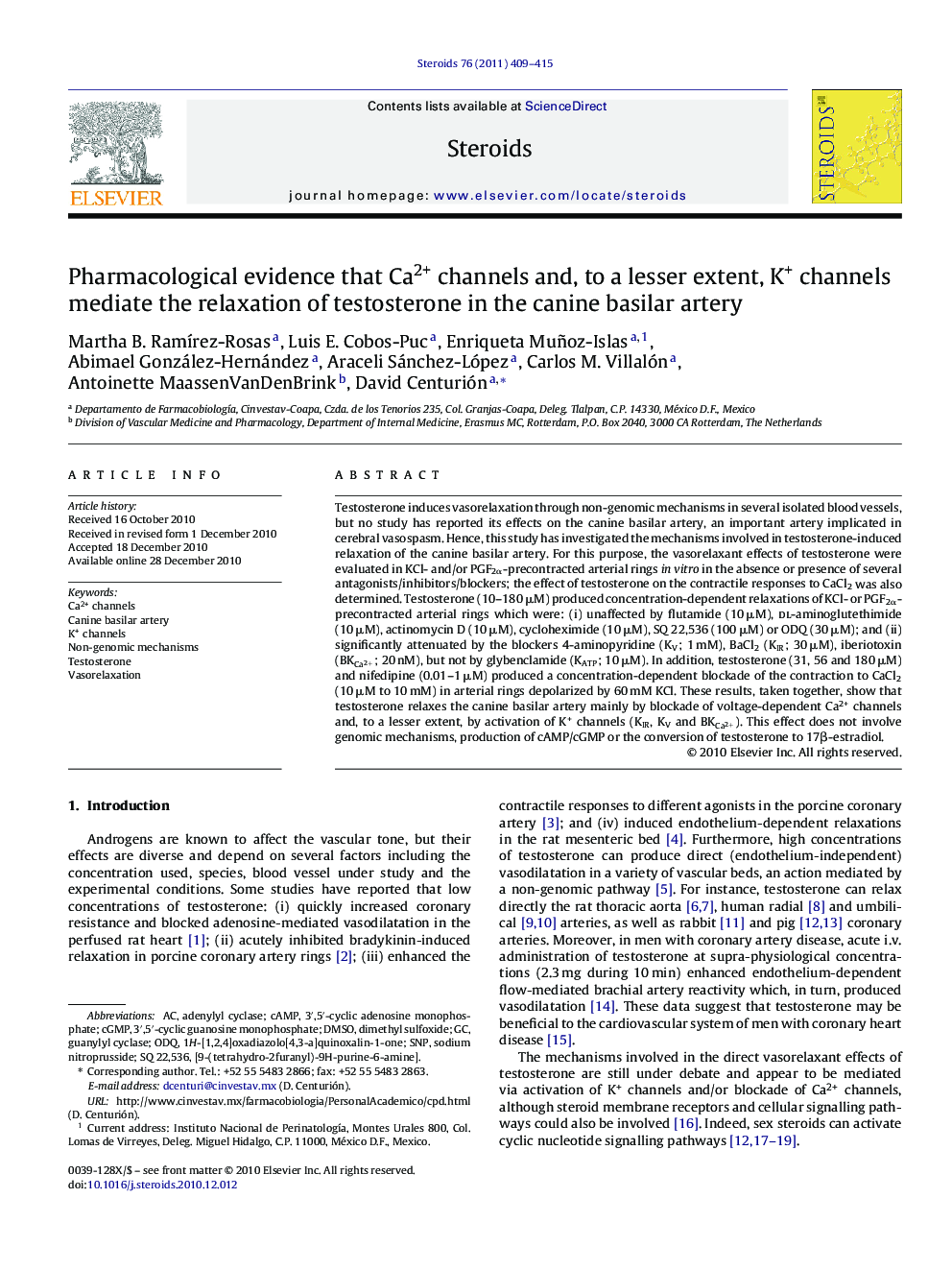| کد مقاله | کد نشریه | سال انتشار | مقاله انگلیسی | نسخه تمام متن |
|---|---|---|---|---|
| 2029354 | 1070561 | 2011 | 7 صفحه PDF | دانلود رایگان |

Testosterone induces vasorelaxation through non-genomic mechanisms in several isolated blood vessels, but no study has reported its effects on the canine basilar artery, an important artery implicated in cerebral vasospasm. Hence, this study has investigated the mechanisms involved in testosterone-induced relaxation of the canine basilar artery. For this purpose, the vasorelaxant effects of testosterone were evaluated in KCl- and/or PGF2α-precontracted arterial rings in vitro in the absence or presence of several antagonists/inhibitors/blockers; the effect of testosterone on the contractile responses to CaCl2 was also determined. Testosterone (10–180 μM) produced concentration-dependent relaxations of KCl- or PGF2α-precontracted arterial rings which were: (i) unaffected by flutamide (10 μM), dl-aminoglutethimide (10 μM), actinomycin D (10 μM), cycloheximide (10 μM), SQ 22,536 (100 μM) or ODQ (30 μM); and (ii) significantly attenuated by the blockers 4-aminopyridine (KV; 1 mM), BaCl2 (KIR; 30 μM), iberiotoxin (BKCa2+BKCa2+; 20 nM), but not by glybenclamide (KATP; 10 μM). In addition, testosterone (31, 56 and 180 μM) and nifedipine (0.01–1 μM) produced a concentration-dependent blockade of the contraction to CaCl2 (10 μM to 10 mM) in arterial rings depolarized by 60 mM KCl. These results, taken together, show that testosterone relaxes the canine basilar artery mainly by blockade of voltage-dependent Ca2+ channels and, to a lesser extent, by activation of K+ channels (KIR, KV and BKCa2+BKCa2+). This effect does not involve genomic mechanisms, production of cAMP/cGMP or the conversion of testosterone to 17β-estradiol.
Research highlights▶ Testosterone relaxes the canine basilar artery. ▶ Testosterone blocks voltage dependent calcium channels. ▶ Testosterone activates potassium channels.
Journal: Steroids - Volume 76, Issue 4, March 2011, Pages 409–415